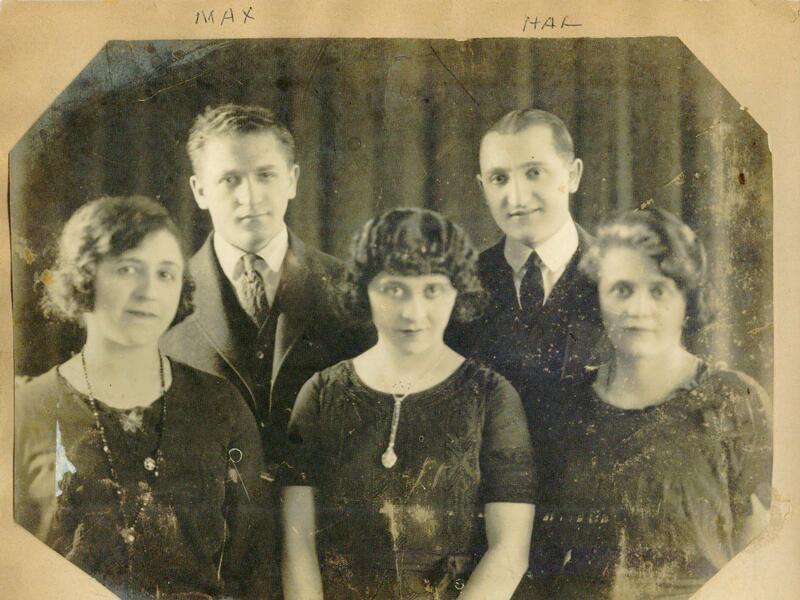Nan Halperin
Nan Halpern became famous on the vaudeville stage not just for her comic performances but for the rapid costume changes that earned her the nickname “The Wonder Girl.” Halperin began acting at age six in local productions in Minneapolis. After high school, she toured with several stock theater companies and became known for her number, “Nan Halperin and Her Suffragettes.” She made her Broadway debut in A Broadway Honeymoon and by 1914 was a major audience draw. She first performed her song cycle Five Stages of Girlhood in 1916, which led her to become one of the highest-paid actresses in vaudeville. Halperin performed in a variety of shows, including the popular musical Little Jesse James in 1923. Halperin retired from the stage in 1934.
Nan Halperin rose to fame as a star of the vaudeville stage. Her comedic musical numbers and her ability to change quickly into many elaborate costumes during a single act earned her the appellation “The Wonder Girl.”
Early Life and Family
Nan Halperin was born in Odessa, Russia, in 1898 and moved to the United States in 1900. She was the daughter of Samuel Halperin, a confectioner, and Rebeka Rose Halperin. She had two brothers—Hal Halperin, manager of the Chicago office of Variety, and Max Halperin, a Chicago agent—and two sisters—Sophie Halperin, who sometimes accompanied Nan on her tours, and Clara Halperin.
Halperin grew up in Minneapolis and began her stage career during summer vacations. Her first acting part was at age six in Little Black Me. As a child she also appeared in local productions as Little Lord Fauntleroy, as Sir Joseph Porter in HMS Pinafore, and in the starring role in Alice in Wonderland.
Following her graduation from Holy Angels Academy, a Catholic school in Minneapolis, Halperin performed in stock companies throughout the western United States and Mexico. Her most notable performance was in the vaudeville number “Nan Halperin and Her Suffragettes.”
Performance Career
Halperin first appeared on Broadway with Emma Carus in A Broadway Honeymoon. Between 1914 and 1915, she gained increasing attention as a vaudeville star. Her big break came in early 1915 when she headlined at New York’s Palace Theatre. Halperin credited her fame to her talents as an actor and to her business acumen. “Many really talented performers do not get ahead because they do not know how to push themselves ahead,” explained Halperin in a 1915 magazine interview. “On the other hand,” she added, “too much temperament means too little business opportunity.”
Coinciding with Halperin’s vaudeville success in 1915 and 1916, newspapers publicized the story that her family was less persecuted than other Russian Jews. Her grandfather was a baron and member of the czar’s court who gained his title because a relative had offered money to aid the Russian emperor during a war. The veracity of this story is uncertain. Its circulation was possibly a publicity stunt to heighten the allure of Halperin, then a rising celebrity.
Among the most famous of Halperin’s musical numbers were her two burlesque “song cycles.” The first of these, which she began to perform in 1916, depicted five stages of girlhood. Halperin would grow before her audience from the youngest child in a family to a mischievous high school valedictorian, a comical bridesmaid at a friend’s wedding, a bride, and, finally, a “blasé divorcée.” In her second song cycle, originally performed in 1919, Halperin played an amusing young girl who becomes an indignant debutante and complains that her parents force her to wear “too many swell clothes … all to catch just one lone man.”
In 1916, Halperin became the first performer to secure a three-year contract with the United Booking Offices, the central agency of B.F. Keith and E.F. Albee’s vaudeville monopoly. By 1919, at age twenty-one, she commanded a salary on a par with vaudeville’s highest-paid female performers. This secured her place in what was then called vaudeville’s “Big Time.” That same year, Halperin also acted in productions outside of vaudeville: She was the female lead in the musical comedy The Frivolities of 1919, and she starred in the drama The Girl in the Stage Box.
Other notable shows in which Halperin appeared were Make it Snappy (1917) and the musical Little Jesse James (1923). Halperin continued her acting career into the 1930s. In 1932, she headlined at Los Angeles’s Orpheum Theater. The next year, she appeared in a variety of performances at the Fox Theater in Brooklyn. Around the same time, she also starred in a Works Progress Administration production of Personal Appearance, which toured several theaters in Long Island, New York.
Legacy
Behind the scenes of Halperin’s theatrical success was the talent of her husband, William Barr Friedlander, a Chicago composer who wrote the songs for her acts. Halperin later wed Ben Thomson, on December 21, 1927, and after Thomson’s death married Edward D. Gould on January 4, 1934, who died in 1945.
Halperin ended her professional acting career in 1934. She subsequently turned increasing attention to local Jewish and nondenominational charities in Kew Gardens, New York, where she had been residing since at least 1920. Nan Halperin died in 1963.
AJYB 24:152;
Halperin, Nan. Clippings file. Billy Rose Theatre Collection, New York Public Library for the Performing Arts;
Hutchinson, Ron. "The Vitaphone project. Answering Harry Warner's question: 'who the hell wants to hear actors talk?'" Film History, 14(1): 40-46.
Locke, Robinson. Collection. Billy Rose Theatre Collection, New York Public Library for the Performing Arts;
Notable Names in the American Theatre (1976);
Slide, Anthony. The Encyclopedia of Vaudeville (1994);
WWIAJ (1928, 1938).




